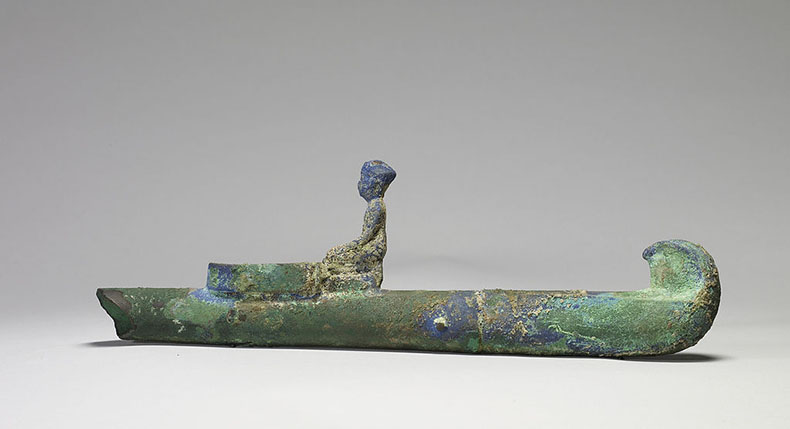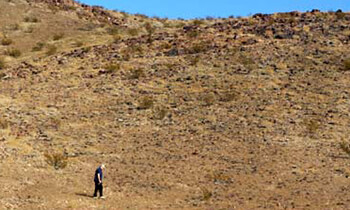Smudging
A Short History
Kristine Bonner
The practice of smudging, and its accompanying sage bundles, abalone shells, and hawk feathers, is familiar to most who have dabbled in the new age, alternative health world that is ever present in today's mash up of spirituality circulating online. But where did it originate? The practice of burning fragrant herbs and resins has been around a very long time. Incense burners have been found that date back to Egypt's 5th dynasty - that's from the 25th and 24th centuries BC - 4500 years ago1.

Egyptian Incense burner Walters Art Museum [Public domain] Bronze 7th Century BC
We can speculate that early humanoids probably picked and saved aromatic stems and leaves for their scent or other properties. White-faced capuchin monkeys have been documented grooming each other with leaves from the piper plant, which is an insect repellent, as well as possessing anti-bacterial and anti-fungal properties.2
Citronella, sage and rosemary when burned, repel insects. Herbs with similar effects would certainly have been a benefit to life in a cave or other prehistoric shelter. It's easy to imagine that the health benefits of burning herbs could transition into a perceived spirituality, as people of old watched smoke wafting up from the fire, and breathed in the pungent, aromatic scents transforming their space, and possibly their senses in an intangible, ethereal way. Those moments may have moved them into meditative states, bringing them closer to their own experience of holiness, or perhaps to an encounter with the Divine.
This practice that originated in antiquity, has since been practiced by many cultures. The Celts had a practice of "saining" that involved sprinkling water from a river or a stream, combined with burning juniper to bless and protect, or consecrate a home or person. 3 Palo Santo wood is still used by Amazonian tribes for healing and in shamanic rituals. The tree is in the same family, Burseraceae, as the Boswellia sacra, that is the source of frankincense.4 Catholics are familiar with the scents of burning frankincense and myrrh in church, a practice that dates back to the Old Testament (Exodus 30:1-10).

Sage burning in abalone shell
Smudging, though, is most associated with northern Native American traditions. Sage is not the only herb used in smudging ceremonies; cedar, tobacco, yarrow and sweetgrass are used as well. The practice is often done to mark the beginning of ceremonies. The clouds of smoke are used to bathe away negative energies and to purify spaces, and people. The herbs, or "medicine" are placed in a shell or fireproof container and lit. A feather or a fan is used to waft the smoke into the air.
If you are going to smudge, it's important to respect the traditions of the Native American people. It was not until 1978 that the American Indian Religious Freedom Act was passed. Prior to that, many Native American ceremonies, including smudging, were illegal in some places and it was only through the courage of people practicing in secret, that these traditions were retained and passed down to current generations.
 Some suggest calling it "smoke cleansing" rather than "smudging" to avoid charges of cultural appropriation.5 The Chumash tribe of California is concerned about over harvesting of white sage.6 Some suggest growing your own sage.7 The USDA says, "This species is readily available from native plant nurseries throughout its range."
Some suggest calling it "smoke cleansing" rather than "smudging" to avoid charges of cultural appropriation.5 The Chumash tribe of California is concerned about over harvesting of white sage.6 Some suggest growing your own sage.7 The USDA says, "This species is readily available from native plant nurseries throughout its range."
There are also many varieties of smudge or smoke cleansing bundles. You may choose to use one that has a resonance with your own cultural background. In whatever way you practice, be sure to remember that it is a sacred ceremony and to honor its history while you sanctify your space.
Read about Crystal Healing. What is it? Does it work?
REFERENCES:
1 Kjeld Nielsen, Incense in Ancient Israel, Leiden, E.J. Brill, 1986, 3.
2 PBS, Clever Monkeys: Monkeys and Medicinal Plants, (accessed Dec. 11, 2019), https://www.pbs.org/wnet/nature/clever-monkeys-monkeys-and-medicinal-plants/3957/
3 Wikipedia, Saining, (accessed Dec. 13, 2019), https://en.wikipedia.org/wiki/Saining
4 TambopataLodge.com, Holy wood: A traditional medicinal plant, used for centuries by indigenous cultures in the Americas, (accessed Dec. 13, 2019), https://www.tambopatalodge.com/en/jungle-blog/holy-wood-a-traditional-medicinal-plant-used-for-centuries-by-indigenous-cultures-in-the-americas
5 Bustle.com, Is Burning Sage Cultural Appropriation? Here’s How To Smoke Cleanse In Sensitive Ways, (accessed Dec. 13, 2019), https://www.bustle.com/p/is-burning-sage-cultural-appropriation-heres-how-to-smoke-cleanse-in-sensitive-ways-18208360
6 USDA.gov, Plant Guide: White Sage, (accessed Dec. 13, 2019), https://plants.usda.gov/plantguide/pdf/cs_saap2.pdf
7 Bustle.com, Is Burning Sage.
Share this page on Facebook:
The Desert Environment
The North American Deserts
Desert Geological Terms







